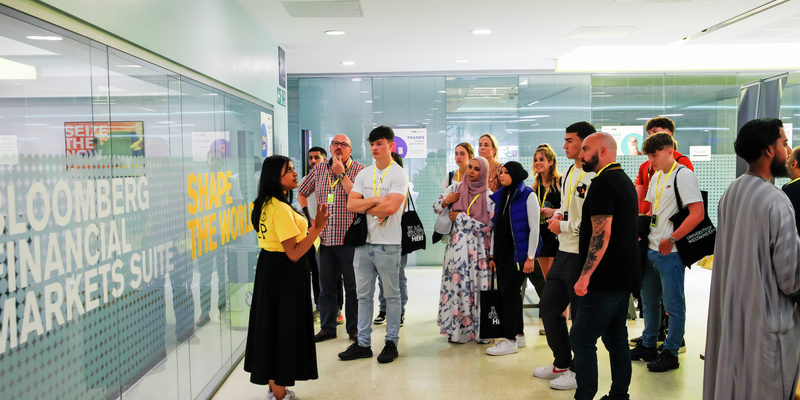The University of Westminster offers Undergraduate and Postgraduate students’ first-hand exposure to Bloomberg Technology widely adopted in all the leading global investment banks in the major financial centres of the world: the City of London, New York’s Wall Street and Tokyo’s Citibank. In this article Finance and Business Management BA student Filippo Iguera tells us about the high-tech learning and teaching resources available to students at Westminster Business School.
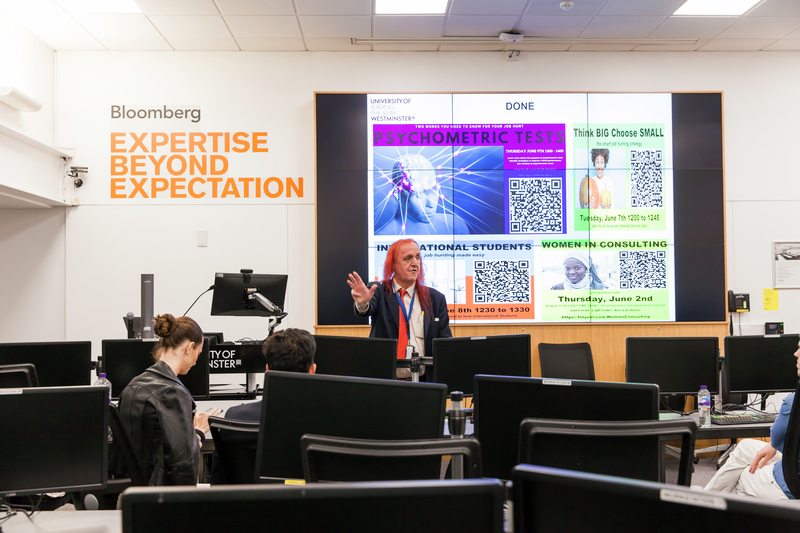
What is the Financial Markets Suite (FMS)?
Through utilising the dual-screen Bloomberg Terminals in the Financial Markets Suite (FMS), students can access real-time company financial information and market data spanning more than 30 years including; prices, statistical trends, current news and proprietary research reports. In short, students who use the Financial Markets Suite can access most information required to undertake a detailed study on a company, sector, security, economy or country. The FMS has 32 Bloomberg Terminals currently installed in the space with a planned expansion and upgrade to 48 terminals.
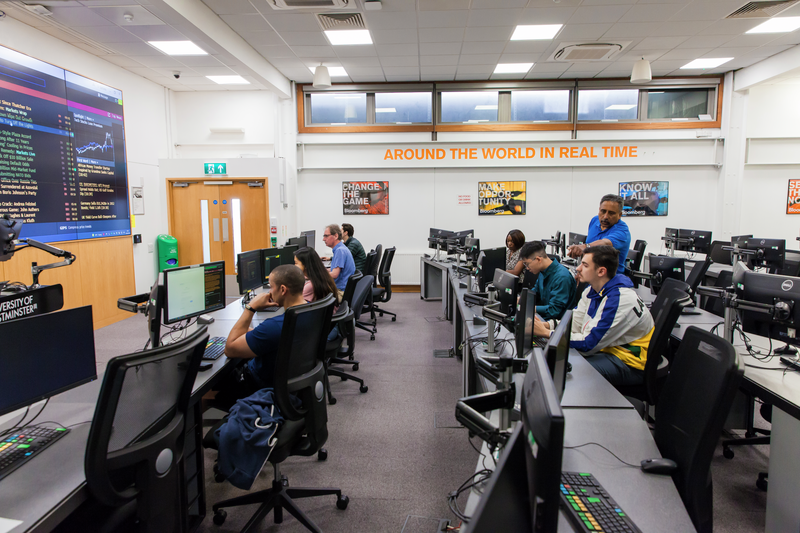
How has access to Bloomberg Technology in the FMS supported you in your studies?
As part of my module coursework, I was required to download and analyse companies and financial markets data. Working knowledge of Bloomberg drastically enhanced my data collection and analysis skills. I could obtain useful information (analyst and research reports) to include in my assignments and dissertation.
I clearly remember several times when I was working on my coursework in the library, and I needed to find a specific and reliable piece of financial information for my research. I would either go to the Thomson Reuters Datastream terminal on the library’s second floor or walk an extra 100 meters to reach the FMS on the ground floor. Once I had researched and collected all the financial information I needed, I would export and add them to my coursework.
Describe the learning experience. What is it like to study in the FMS?
The Financial Markets Suite allows lecturers to bring real world examples into the classroom and provides students with the same platform used by the world’s leading banks, corporations, and government agencies.
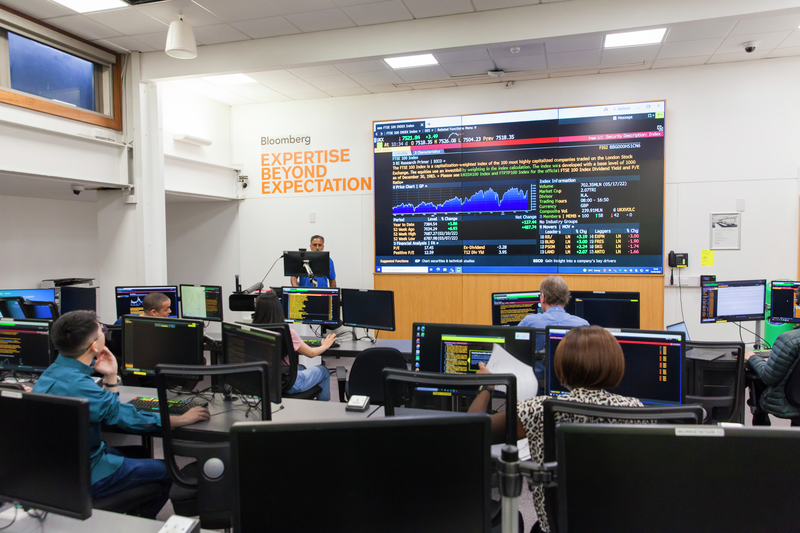
Theory and concepts taught from books and peer-reviewed journals were more readily demonstrated and applied. For example, consider the Capital Asset Pricing Model (CAPM), a concept familiar to all finance students. I remember tutors showing us how to extract all of the model’s inputs in minutes using the market information accessible through the database. From a technical analysis standpoint, the beta for any stock can be generated in seconds, together with details of the risk-free rate of return and the market risk premium. This exercise can be repeated with any listed stock in any country with an official stock exchange.
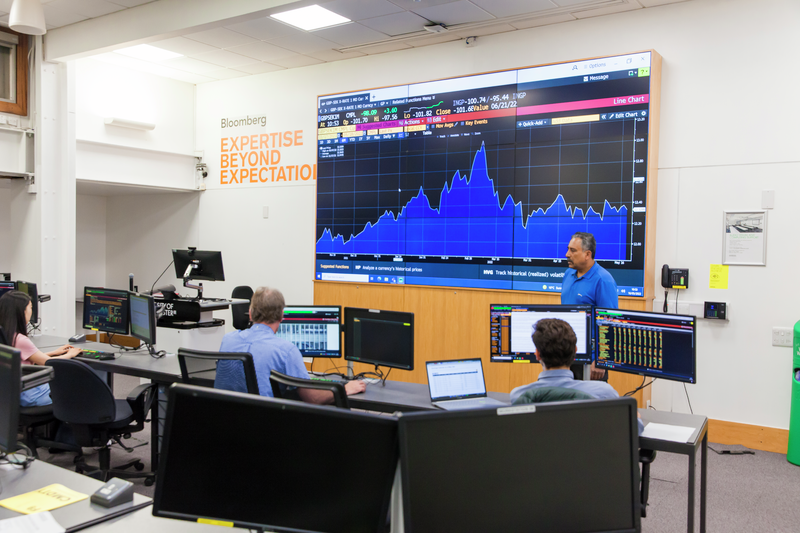
Similarly, bond market information, such as yield curves, is readily accessible and can be analysed in several ways.
From charts and streaming news, students can clearly see the value of the information transmitted across the global Bloomberg network. All major asset classes – equities, bonds, cash, indices, currencies, and derivatives are covered, facilitating students’ appreciation and knowledge of the financial markets.
What’s your top tip for gaining the most out of the resource?
While our lecturers, most of whom are experienced practitioners with a professional background in the financial and banking sector, guide students on how to use the technology during classes and office hours, individual practice is required to develop proficiency with all the complex functions of the database. To facilitate this learning, the University of Westminster recommends that students work through Bloomberg Market Concepts (BMC), a 10-hour, self-paced e-learning course that provides a visual introduction to financial markets analysis whilst introducing essential Bloomberg Professional commands. This learning, together with the certificate of completion, is a valuable asset to students interested in pursuing a career in finance. The University of Westminster pays the BMC to students willing to enrol on the course.
How has study at Westminster Business School supported your career aspirations?
For students looking at careers within a broad range of business and finance-led roles, Bloomberg training will help you develop analytical skills and up-to-the-second knowledge of global markets. The University of Westminster’s partnership with Bloomberg helps students gain an extracurricular certification widely recognised in the job market, showcase their self-motivation and willingness to learn to future employers, and acquire valuable transferable skills.
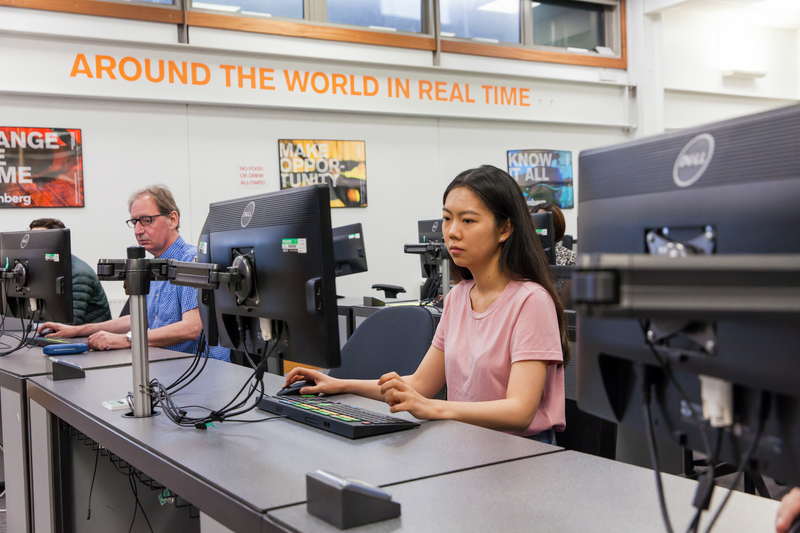
Although in my current position in the M&A Advisory division at PwC, I am primarily using S&P Capital IQ and Mergermarket, I was required many times to use the Bloomberg Terminals to find a company’s Weighted Average Cost of Capital (WACC) for a Discounted Cash Flow (DCF) model or to look for other pertinent information to use in our pitch books. Employers do not assume that junior analysts know how to use the Bloomberg Terminal. Still, demonstrating that you know how to use its functions gives you a competitive advantage over your peers who don’t.
Students on our finance degree courses have access to a global financial database in our state-of-the-art Bloomberg virtual trading room Financial Markets Suite. Our taught portfolio covers accounting, business analytics, finance, fintech, investment and risk finance. Find the right course for you by researching Accounting and Finance study options on our website.
